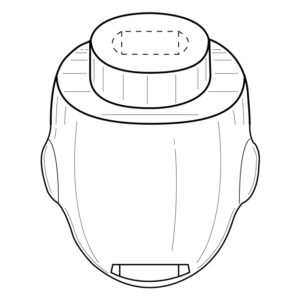What is a Design?
A design per se is the overall appearance of a product, both visual and aesthetic. It can include the shape, configuration, pattern and ornamentation of a product, whether it is bespoke or manufactured, has an industrial or commercial use.

What is Design Registration?
A design registration protects the appearance of a product, but not its function. Design rights are different to copyright, which protects the intellectual property in artistic works, and patents which protect the functional features of a product. Design rights are registered under the Designs Act (Cth) 2003.
Design rights can exist in both 3D and 2D products, such as wallpaper, wrapping materials, and fabrics, particularly where there is a repeating pattern. Designs can also protect products that do not have fixed dimensions such as pipes, gutters and other extruded products.
There are certain exclusions for which design registration is not available, including service and Olympic medals, Australian currency and scandalous designs.
What is the procedure to register a design?
In Australia, designs are registered by filing a design application at IP Australia. Before submitting an application a ‘prior art’ search of the Australian Design database (and possibly other key national databases) is recommended. This will help in determining whether your proposed design is ‘new and distinctive’ and whether filing an application is warranted. It is also advisable to undertake some preliminary image searching on web-based search engines such as Google.
The registration procedure is outlined below:
- Filing the design
At the time of filing, information about the design must be submitted, including line drawings and photographic representations of the product. The filing date is extremely important as it is used to determine the priority date of your design. - Formalities check
Once an application is filed it is an examined for formalities. If there are no objections, the design will be registered. If any objections are raised the applicant has two months from the date of issuance of the report to address and overcome the objections. If the objections are not overcome the design application will lapse. - Registration
Once the design application passes the formalities check, the design will be registered and advertised in the Australian Official Journal of Designs. Registration protects your design for five years from the date the application was filed and can be renewed for another five years. If you do not renew your application, your design passes into the public domain and is free for anyone to use. - Examination
Once a design has been registered, you can request that it be examined at any time. It is important to note that third parties can also request examination of your registered design. The examination process is to determine whether your design is ‘new and distinctive’. Although examination is optional in Australia, a design registration is not enforceable until it is examined and certified by the Design Office. If any objections are raised the registered owner has six months from the date of the examination report to overcome all of the objections, with an option to appeal. - Certification
If the examiner is satisfied that there are no grounds of invalidity, your registered design will be certified. Once your design is certified, you have the exclusive right in your design and can legally enforce those rights and against third parties.
Can I disclose my design before filing a design application?
Currently Australia does NOT have a grace period that enables an applicant to publicly disclose their design before filing an application.
Accordingly, prior disclosure can potentially invalidate any subsequently filed design application and under current Australian law you must file your application first before disclosing or commercialising your design.
Public disclosure includes:
- publication anywhere in the world;
- manufacture within Australia; and
- any sale or offer to sell or publish the design or a product that includes the design.
Whilst Australia does not allow prior disclosure of a design before filing an application some of our major trading partners do have grace periods and you can validly file a design application within the respective grace period without your application being invalid for prior disclosure or use. This option is available in at least the United States and Europe.
International design applications
It is possible for an Australian design applicant/owner to apply for design protection in other jurisdictions by filing individual national applications. These applications must be made in accordance with the various national law and can claim Convention priority from the Australian application if filed with six months of the Australian filing date.
How much does it cost?
The cost involved in obtaining a design registration and certification vary depend on what you are seeking. IP Australia issues Official Fees for both filing a design application and requesting examination of a registered design. Associated Attorney costs vary depending on circumstances and may include the preparing of formal drawings.
How do I start?
If you would like to read more detailed information about the Design Registration process, please download our Registered Designs Guide.
If you are ready to begin the process please contact Krouzer IP either by mail, email, or telephone so that we can advise you on how to proceed, and what information we require. As each application is unique we aim to provide the most appropriate strategic approach and advise you of the different cost options.